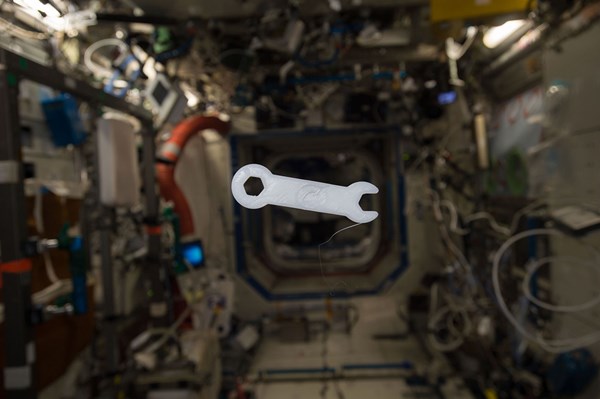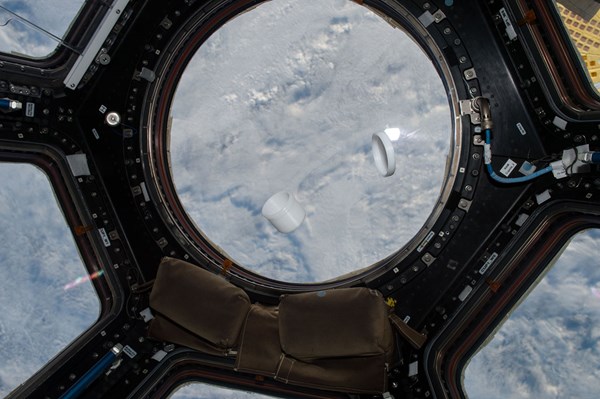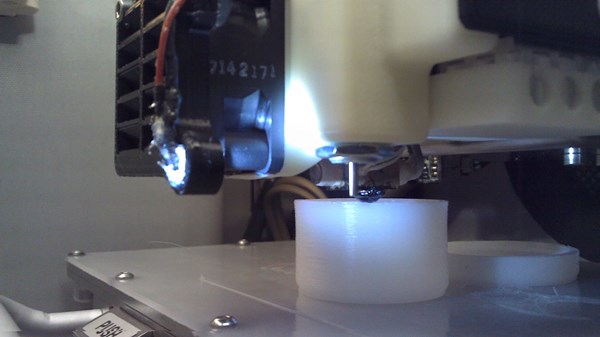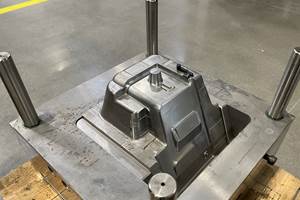Braskem’s Green PE Used to 3D Print Parts in Space
Braskem worked with Made In Space to produce green PE specifically for 3D printing in zero gravity.

Braskem worked with Made In Space to produce green PE specifically for 3D printing in zero gravity.
So here’s a really cool innovation story for you all, combining renewable materials, 3D printing AND space: green plastic made from sugarcane is now is now being used to fabricate parts in space. This is thanks to a partnership between Braskem America Inc. and U.S.-based Made In Space, a developer of zero gravity 3D printers and an official supplier to NASA. The technology allows astronauts to fabricate tools and spare parts in space using the biobased resin.
The first part made from the raw material outside of Earth was a pipe connector for a vegetable irrigation system, which was fabricated by the Additive Manufacturing Facility (AMF)—the first commercial 3D printer permanently allocated in space. The equipment, which will fabricate various types of parts using ‘I'm green’ plastic, is located on the International Space Station (ISS) and was developed by Made In Space, with the support of the Center for the Advancement of Science in Space (CASIS).
For over a year, Braskem's Innovation & Technology team has been working with Made In Space to develop a Green Plastic solution especially for 3D printing in zero gravity. The partnership will enable astronauts to receive by e-mail digital designs of the parts and then print them, which means dramatic savings in terms of time and costs.
"Through this partnership, we combined one of the greatest innovations in polymers, Green Plastic, with advanced space technology to print 3D objects in zero gravity. Putting a renewable polymer in space for printing applications represents an important milestone in our history," says Patrick Teyssonneyre, director of Innovation & Technology at Braskem.

Polyethylene made from sugarcane was the material chosen for the project because of its combination of properties, including flexibility, chemical resistance and recyclability, and also because it is made from a renewable resource. There are reportedly great expectations surrounding the project's benefits, since 3D printing in space was defined by NASA as one of the advances essential for a future mission to Mars.
"The ability to print parts and tools in 3D on demand increases the reliability and safety of space missions. This partnership with Braskem is fundamental for diversifying the raw materials used by the AMF and for making this technology more robust and versatile," says Andrew Rush, CEO of Made In Space.
Braskem's technology is also present in the structure of the actual printer. The equipment's printing bed is made of Braskem's ultra-high molecular weight polyethylene (UHMW-PE), which is marketed under the brand UTEC. The resin provides increased tack for printing with green PE and offers mechanical properties, such as superior abrasion and impact resistance.
Braskem says that this project should drive the development of solutions that go beyond manufacturing in space to create opportunities for innovations in polyolefin applications. "The technology has the potential to impact the plastics chain by enabling new applications and mass personalization made with a renewable resource," says Gustavo Sergi, director of Renewable Chemicals at Braskem.
Reinforcing the relevance of its environmental aspect, a new Life Cycle Assessment (LCA) of Green Plastic indicated the removal of 2.78 tons of carbon dioxide for each ton of biobased resin produced. The study was conducted by the consulting firm ACV Brasil and subjected to a technical review by a panel formed by the Institute for Energy and Environmental Research GmbH (IFEU) and Michigan State University.

Related Content
Additive Technologies for Injection Mold Tooling Ride Tailwinds
NPE2024: Lowering barriers to additive manufacturing adoption in toolmaking.
Read More5 Trends in 3D Printed Injection Mold Tooling
3D printing has moved beyond conformal cooling, and is now being applied to injection molds more broadly. Observations on additively manufactured mold tooling from the Plastics Technology Expo — PTXPO 2025.
Read MoreAdditive Fusion Technology Optimizes Composite Structures for Demanding Applications
9T Labs continues to enhance the efficiency of its technology, which produces composite parts with intentionally oriented fibers.
Read MoreDaimler, OMIC Evaluate Wire-Fed DED for Moldmaking
3D printing a core and cavity on machine from Gefertec, followed by machining, allowed for a complete mold tool to be produced in three days.
Read MoreRead Next
Lead the Conversation, Change the Conversation
Coverage of single-use plastics can be both misleading and demoralizing. Here are 10 tips for changing the perception of the plastics industry at your company and in your community.
Read MorePeople 4.0 – How to Get Buy-In from Your Staff for Industry 4.0 Systems
Implementing a production monitoring system as the foundation of a ‘smart factory’ is about integrating people with new technology as much as it is about integrating machines and computers. Here are tips from a company that has gone through the process.
Read MoreMaking the Circular Economy a Reality
Driven by brand owner demands and new worldwide legislation, the entire supply chain is working toward the shift to circularity, with some evidence the circular economy has already begun.
Read More













